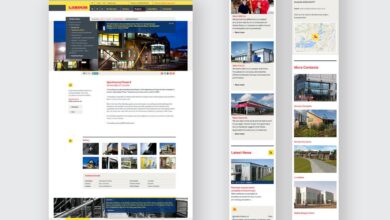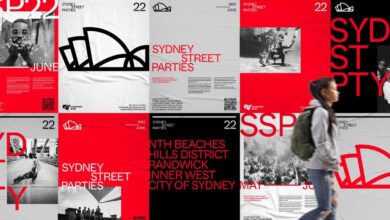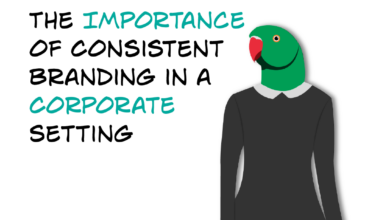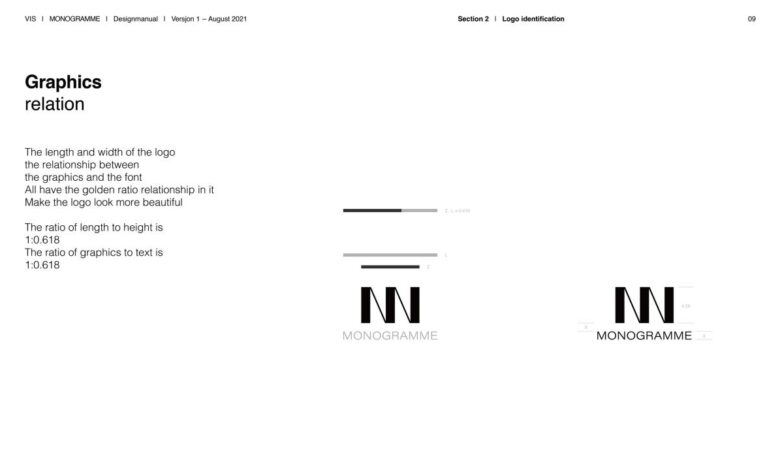
Brand Identity Use Shapes Effectively
Brand identity use shapes is more than just aesthetics; it’s a powerful tool for communication. Shapes subconsciously influence how consumers perceive a brand, triggering emotional responses and creating lasting impressions. From the clean lines of a geometric logo to the flowing curves of a more organic design, the choice of shape speaks volumes about a brand’s personality and values.
This exploration delves into the psychology of shapes in branding, exploring how different forms can be leveraged to build a memorable and impactful brand identity.
We’ll examine how various industries utilize shapes differently, looking at successful case studies and exploring the evolution of shape usage in branding. We’ll even peek into the future, predicting upcoming trends and the impact of emerging technologies on brand shape design. Get ready to unlock the secret language of shapes and how they can transform your brand!
Defining Brand Identity Use Shapes
Brand identity is more than just a logo; it’s a visual language that communicates a company’s values, personality, and mission. A crucial element of this language is the strategic use of shapes, which, often unconsciously, influence how consumers perceive a brand. Understanding the power of shape in branding allows for the creation of memorable and impactful visual identities.Shapes evoke specific emotions and associations, acting as powerful visual cues.
The careful selection and arrangement of shapes within a brand’s visual system can significantly impact its overall effectiveness. This goes beyond simply creating a visually appealing logo; it’s about crafting a visual identity that resonates deeply with the target audience and effectively communicates the brand’s core message.
Geometric Shapes and Their Emotional Associations
Different geometric shapes inherently carry different connotations. Circles, for example, often symbolize unity, wholeness, and infinity. Their smooth, continuous lines suggest harmony and completeness. Squares and rectangles, on the other hand, represent stability, order, and reliability – their rigid structure conveys a sense of dependability and professionalism. Triangles, with their pointed angles, can evoke feelings of energy, dynamism, and even aggression, depending on their orientation and context.
The use of sharp angles can also imply modernity and innovation, while softer curves often communicate gentleness and approachability. Consider how a sharp, angular logo might suit a tech startup aiming for a cutting-edge image, while a softer, rounded logo might be better suited for a childcare center.
Examples of Brands Effectively Using Geometric Shapes
Many successful brands leverage the power of geometric shapes in their logos. Consider the simplicity and impact of the Apple logo – a partially bitten apple, essentially a circle with a bite taken out. This simple, yet memorable shape communicates a sense of modernity and innovation. The Twitter logo, a blue bird, utilizes various curved lines and rounded shapes to project a friendly, approachable, and communicative brand image.
Conversely, the Nike swoosh, a dynamic and slightly curved checkmark, effectively captures the essence of motion, speed, and athleticism. These examples highlight how carefully chosen shapes can contribute significantly to a brand’s overall identity and memorability.
Logo Designs Using Geometric Shapes
Below are three logo concepts, each created using only geometric shapes and aiming to convey a distinct brand personality.
Logo 1: “EcoFlow” (Environmental Consultancy)
This logo uses a combination of a green circle (representing the planet) and a stylized leaf formed from smaller, overlapping circles and triangles. The overall impression is one of natural harmony and sustainable practices. The overlapping shapes subtly suggest growth and interconnectedness. The color green reinforces the environmental theme.
Logo 2: “Peak Performance” (Fitness Brand)
This logo features a stylized mountain peak constructed from sharp triangles pointing upwards. The color scheme is vibrant and energetic, utilizing a bold orange and yellow. The upward-pointing triangles convey ambition, achievement, and a drive for peak performance. The overall feeling is one of strength, energy, and motivation.
Logo 3: “Solid State” (Technology Company)
This logo uses a combination of squares and rectangles in a grid-like formation. The color palette is a sophisticated dark blue and gray, reflecting stability and technological precision. The strong, geometric shapes create a sense of reliability, efficiency, and technological prowess. The overall feeling is one of solidity, trust, and dependability.
Psychological Impact of Shapes in Branding
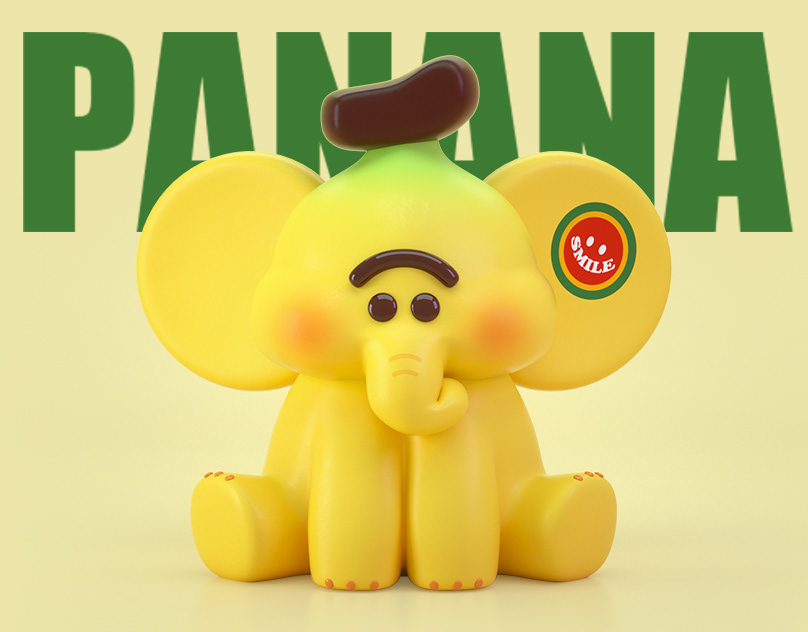
Source: behance.net
We’ve already explored the basics of shape in branding, but now let’s delve into the fascinating, often subconscious, ways shapes influence consumer perception. Understanding this psychological impact is crucial for crafting a brand identity that resonates deeply with your target audience. The shapes you choose aren’t just aesthetic choices; they’re powerful communication tools.
Shapes subtly communicate messages about your brand’s personality, values, and even the products or services you offer. This influence operates below the level of conscious awareness, impacting consumer feelings and behaviors in ways we might not even realize. By strategically selecting shapes, you can evoke specific emotional responses and build a stronger connection with your audience.
Organic versus Geometric Shapes
Organic shapes, mimicking natural forms like leaves or flowing water, tend to evoke feelings of warmth, naturalness, and approachability. Think of a logo featuring a stylized leaf; it often suggests environmental consciousness or a connection to nature. In contrast, geometric shapes—circles, squares, triangles—communicate order, precision, and modernity. A logo built on sharp, angular lines might project a sense of innovation or technology.
The choice between organic and geometric shapes profoundly affects the overall brand perception. For example, a skincare brand might leverage soft, organic shapes to convey natural ingredients and gentle care, while a tech startup might prefer sharp geometric forms to convey innovation and efficiency.
Color and Shape Interaction
Color and shape are not independent elements in brand design; they work synergistically to create a powerful visual identity. The same shape can evoke vastly different feelings depending on the color used. A red circle, for instance, might convey energy and urgency, while a blue circle might suggest calm and trustworthiness. A yellow triangle might project optimism and creativity, whereas a black triangle might feel sharp, aggressive, even menacing.
Consider the interplay of color and shape carefully; their combined effect determines the final emotional impact on the viewer. A well-balanced combination can amplify the intended message, while a poorly chosen pairing can create unintended and negative consequences.
Psychological Connotations of Shapes
The following table summarizes the common psychological connotations associated with various shapes. It’s important to remember that these are general associations, and context plays a significant role in shaping the final perception.
| Shape | Common Connotations | Brand Examples (Illustrative) | Possible Brand Applications |
|---|---|---|---|
| Circle | Unity, wholeness, infinity, security, community | (Imagine a logo with a simple, unbroken circle. This could represent a brand focusing on community or global reach) | Social media platforms, global organizations, brands emphasizing community |
| Square/Rectangle | Stability, reliability, honesty, security, practicality | (Imagine a logo with a strong, well-defined square. This could represent a brand focused on stability and reliability) | Financial institutions, construction companies, brands emphasizing trustworthiness |
| Triangle | Energy, dynamism, ambition, power, stability (depending on orientation) | (Imagine a logo with an upward-pointing triangle. This could represent a brand focused on growth and ambition) | Sports brands, tech companies, brands emphasizing progress |
| Spiral | Growth, progress, energy, movement, transformation | (Imagine a logo with a gracefully curving spiral. This could represent a brand focused on continuous improvement or evolution) | Educational institutions, brands emphasizing continuous improvement, technology companies |
Shapes in Different Branding Contexts
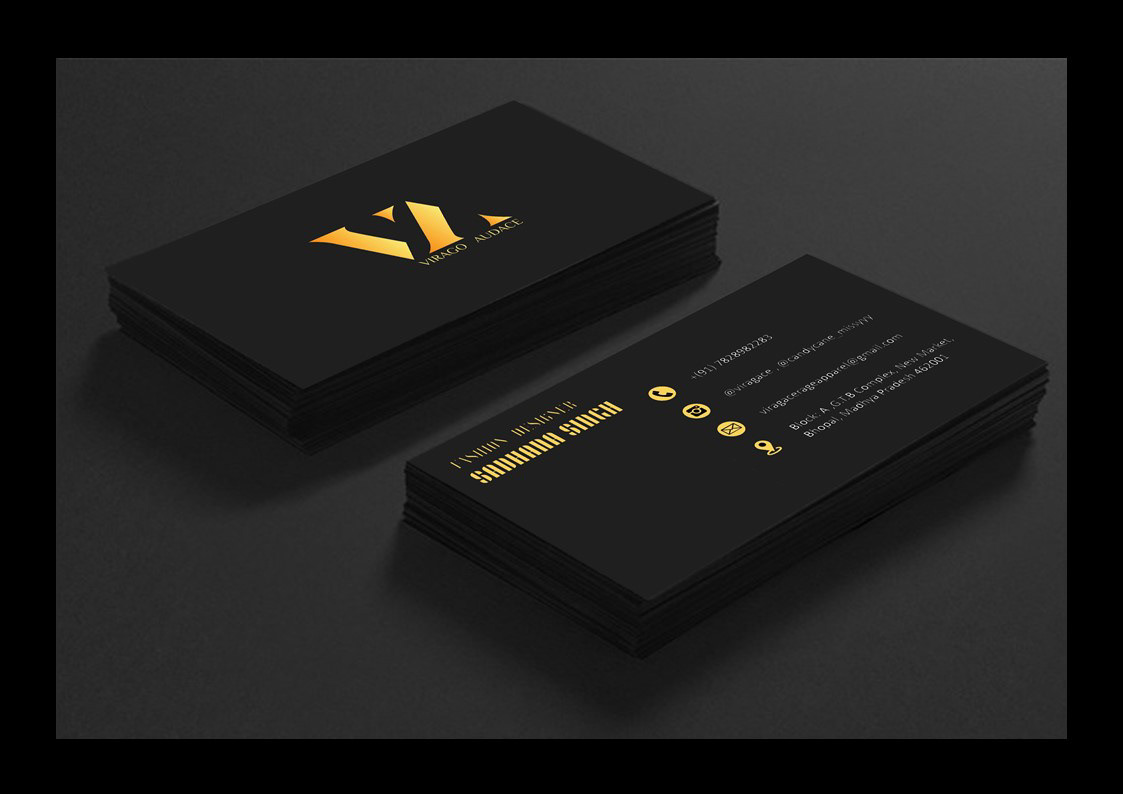
Source: behance.net
The choice of shape in branding isn’t arbitrary; it’s a strategic decision deeply impacting how consumers perceive and remember a brand. Different industries leverage shapes in unique ways, reflecting their target audience and brand values. Understanding this nuanced application is crucial for effective brand building.Shapes communicate subtly yet powerfully, shaping brand perception across diverse sectors. A sharp, angular shape might convey technology’s precision and innovation, while softer, rounded forms could suggest the comfort and warmth associated with food brands.
This strategic use of shape transcends mere aesthetics; it becomes a silent language, weaving a narrative around the brand’s identity.
Shape Usage Across Industries
The application of shapes varies considerably across industries. Consider the tech industry, often favoring sharp lines, geometric forms, and bold colors to project innovation, precision, and modernity. In contrast, the food industry frequently employs softer, more organic shapes—curves, circles, and natural imagery—to evoke feelings of warmth, comfort, and approachability. Luxury brands might use sophisticated, elegant shapes, while eco-conscious brands might integrate natural forms and sustainable materials to convey their values.
This strategic use of shapes helps each industry establish a distinct visual identity and resonate with its target audience.
Examples of Unconventional Shape Usage
Some brands successfully break the mold by employing unusual or unconventional shapes. Consider the Pepsi logo, which is often described as a flowing, dynamic shape, suggesting movement and energy. This deviates from more static, geometric logos common in the beverage industry. Similarly, the Adidas logo, consisting of three interconnected stripes, forms a unique and instantly recognizable visual. These unconventional shapes have become integral parts of their respective brands, enhancing memorability and recognition.
Another example is the Spotify logo, a simple yet striking green circle that effectively communicates music’s universal and continuous nature. The unconventional aspect lies in its simplicity; it avoids overly complex designs, making it memorable and easily reproduced across various platforms.
Comparative Analysis of Shape Usage in Three Food Brands
Let’s compare the shape usage of three prominent food brands: Coca-Cola, Hershey’s, and McDonald’s. Coca-Cola utilizes a classic Spencerian script for its logo, which, while not strictly a shape, possesses a flowing, dynamic quality that evokes a sense of happiness and refreshment. The script’s curves and loops create a sense of movement and energy, mirroring the bubbly nature of the beverage.
Hershey’s, on the other hand, uses a simple, Hershey’s Kiss-shaped logo, conveying sweetness and indulgence. The shape directly relates to their product, making it immediately recognizable and highly effective. McDonald’s employs a series of golden arches, creating a recognizable, iconic shape that has become synonymous with fast food. The arches’ upward curve suggests optimism and accessibility. These three brands showcase how different shapes can effectively communicate unique brand personalities within the same industry.
Shape’s Influence on Brand Memorability and Recognition
The choice of shape significantly impacts brand memorability and recognition. Simple, distinctive shapes are more easily recalled than complex ones. A well-chosen shape becomes a visual shortcut, instantly linking the shape to the brand. This is why many successful brands utilize simple, memorable shapes that are easily reproducible across various media and contexts. Furthermore, consistent use of the chosen shape across all branding materials reinforces brand identity and strengthens consumer recognition.
The ability to recall the shape readily translates to higher brand recall and preference, ultimately contributing to the brand’s success.
The Evolution of Brand Identity Shapes
The use of shapes in branding isn’t just about aesthetics; it’s a powerful tool that has evolved significantly over time, reflecting societal shifts, technological advancements, and changing design philosophies. Early branding often relied on simple, easily recognizable shapes, often dictated by the limitations of printing technology. As design capabilities advanced, so did the complexity and sophistication of brand shapes, mirroring the growth of consumerism and the rise of global brands.The evolution of brand identity shapes can be understood through several key phases, each characterized by distinct stylistic choices and technological influences.
Early logos often featured basic geometric shapes—circles, squares, and triangles—due to their simplicity and ease of reproduction. The mid-20th century saw the rise of more stylized and abstract shapes, often incorporating elements of Art Deco or mid-century modern design. Today, we see a blend of minimalist approaches alongside intricate and highly detailed shapes, influenced by digital design and the demand for unique brand identities in a crowded marketplace.
Successful Rebranding Through Shape Changes
Several brands have successfully leveraged shape changes as part of a broader rebranding strategy. A prime example is Pepsi. Over its history, the Pepsi logo has undergone numerous transformations, each reflecting the prevailing design trends of its era. Early iterations featured a simple, rounded script. Later versions incorporated more geometric shapes, evolving from a circular design to a more dynamic, globe-like representation.
These changes weren’t merely cosmetic; they aimed to rejuvenate the brand’s image, attract new demographics, and align with contemporary aesthetics. Similarly, the Mastercard logo, originally featuring overlapping circles, has been subtly refined over time, maintaining its core visual identity while enhancing its modern appeal through refined proportions and color palettes. These successful rebrands demonstrate the power of strategic shape manipulation in revitalizing a brand’s visual language.
Influence of Current Design Trends on Brand Shapes
Current design trends heavily influence the shapes employed in modern branding. Minimalism continues to be a dominant force, favoring simple, clean shapes that convey clarity and sophistication. Geometric shapes, particularly those with sharp angles and bold lines, are frequently used to project a sense of modernity and innovation. However, a counter-trend is also emerging: a return to more organic and hand-drawn shapes, often incorporating textures and imperfections to create a more human and approachable brand identity.
This reflects a broader societal shift towards authenticity and emotional connection. The use of negative space, once a more subtle design element, is now increasingly prevalent, allowing brands to create sophisticated logos that are both visually striking and memorable.
Timeline of the Evolution of the Coca-Cola Logo Shapes
To illustrate the evolution of brand shapes over time, let’s examine the Coca-Cola logo.
| Year | Description of Shape | Design Style |
|---|---|---|
| 1886 | Spencerian script lettering, highly decorative and ornate. No distinct shape beyond the flowing script itself. | Victorian Era calligraphy |
| 1890 | The script is slightly simplified, but still retains its ornate qualities. The overall shape is elongated and flowing. | Late Victorian, less ornate |
| 1941 | The script is modernized with a more rounded and flowing appearance, sitting within a red oval. | Streamlined Moderne |
| 1969 | The iconic “Coke” script is retained, but simplified and modernized; the oval is dropped. | Mid-century Modern |
| 2003 (present) | The script is slightly adjusted but the core visual identity remains consistent, focusing on the distinctive lettering. | Contemporary, simplified |
Future Trends in Brand Identity Shapes
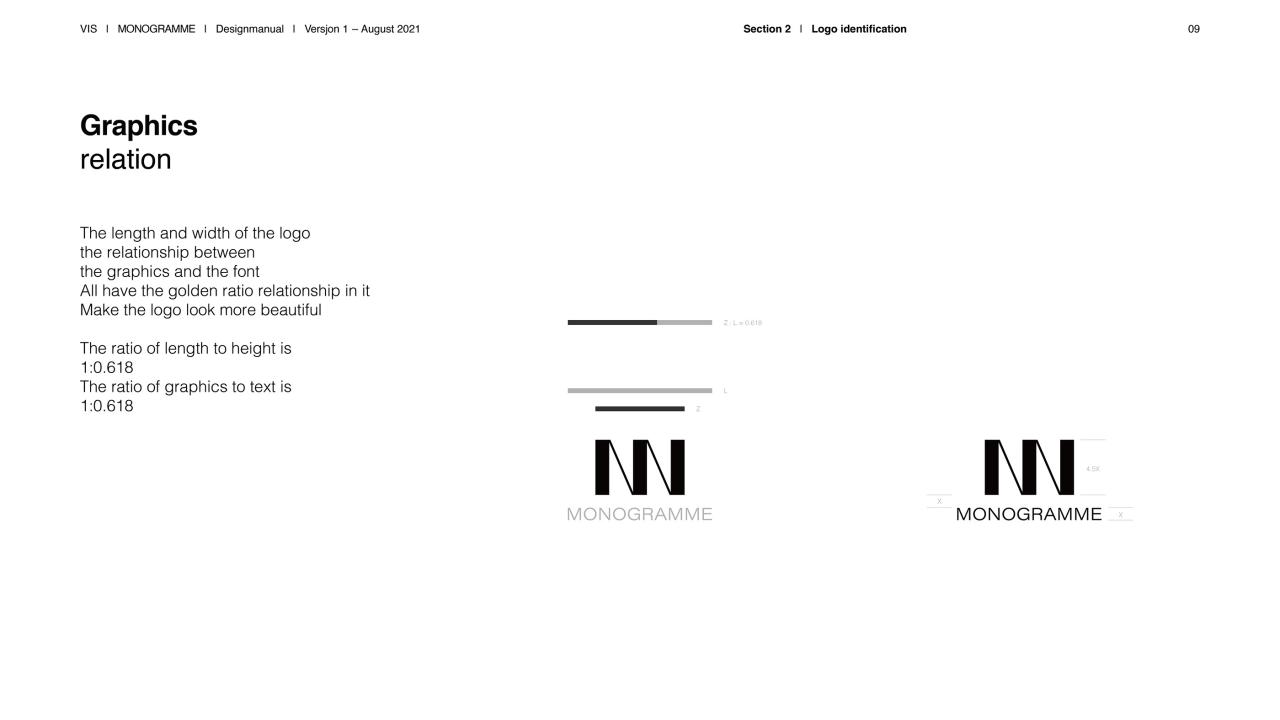
Source: behance.net
The world of branding is constantly evolving, and brand identity shapes are no exception. We’re moving beyond simple geometric forms and into a realm of dynamic, responsive, and technologically-driven design. The future of brand shapes promises to be as diverse and innovative as the products and services they represent.Emerging technologies like AI and generative design are poised to significantly impact how brand shapes are created and utilized.
These tools allow for the exploration of far more complex and nuanced forms than ever before, pushing the boundaries of traditional design techniques. Simultaneously, the growing importance of sustainability and inclusivity will shape the aesthetic and meaning behind these shapes, leading to more conscious and meaningful brand identities.
The Rise of Biomorphic and Abstract Shapes
We’ll see a continued shift away from purely geometric logos toward more organic and abstract shapes. Think flowing lines, irregular forms inspired by nature, and designs that evoke a sense of fluidity and movement. This trend reflects a broader cultural shift toward valuing authenticity and connection with the natural world. Brands will use these shapes to communicate a sense of sophistication, innovation, and a deeper understanding of their customer base.
For example, a wellness brand might utilize a logo incorporating swirling, leaf-like forms to communicate its commitment to natural ingredients and holistic health.
Personalized and Dynamic Brand Shapes
The integration of AI and interactive design will lead to personalized brand shapes that adapt and change based on user interaction or context. Imagine a logo that subtly morphs depending on the platform it’s displayed on or even reacts to user data. This level of dynamic branding will create more engaging and memorable experiences for customers. This dynamic approach allows for greater flexibility and responsiveness, creating a more personalized brand experience tailored to each individual.
Three Hypothetical Brand Logos Representing Future Trends, Brand identity use shapes
- Brand A: A logo for a sustainable technology company. The shape is a stylized, interconnected network of leaves, each leaf subtly different in size and shade, representing the interconnectedness of nature and technology. The color palette is a blend of deep greens and soft blues, emphasizing both natural elements and technological innovation. The overall effect is one of elegant simplicity and sophisticated sustainability.
- Brand B: A logo for a virtual reality gaming company. The shape is a three-dimensional, abstract form that appears to shift and change depending on the viewing angle. The colors are vibrant and dynamic, reflecting the energy and excitement of the VR gaming world. The design suggests movement and depth, immersing the viewer in the experience even through a static logo.
- Brand C: A logo for a personalized mental wellness app. The shape is a simple, soft curve that subtly transforms and animates on screen, reflecting the user’s mood or progress. The color palette shifts dynamically from cool blues to warm oranges, reflecting the changing emotional landscape of the user. This design offers a calming, ever-evolving visual experience that is both engaging and supportive.
So you’re thinking about brand identity and how shapes play a crucial role? It’s all about visual communication, and that extends to your online presence. To really nail that impact, you need to understand video marketing, and that’s where learning how to effectively leverage YouTube comes in – check out this great resource on getting it on with youtube to boost your reach.
Ultimately, consistent application of your brand’s visual language, including those carefully chosen shapes, is key across all platforms.
Innovative Shape Usage for a Hypothetical Product: “Symbiotic”
A Sustainable Clothing Line
A Sustainable Clothing Line
“Symbiotic” is a clothing line that uses recycled and sustainable materials. Its brand identity revolves around an innovative use of shape: a continuously evolving, interconnected network of shapes representing the interconnectedness of the ecosystem and the circularity of its production process. The logo itself is not static; it’s a generative design that adapts based on the season, using different shades of green and brown to represent the changing landscape.
The shapes themselves are biomorphic, representing the natural origins of the materials. Moreover, the logo interacts with the company’s website and social media, adapting to user interactions and displaying information about the sustainability of each garment. This interactive logo enhances brand storytelling and reinforces the company’s commitment to environmental responsibility.
Case Studies
Let’s delve into some real-world examples of how brands have successfully leveraged the power of shapes in their visual identities. Analyzing these case studies will illuminate the strategic thinking behind shape selection and its impact on brand perception and market success. We’ll explore how specific shapes resonate with target audiences and contribute to a brand’s overall memorability and effectiveness.
Nike’s Swoosh: A Case Study in Shape-Driven Branding
Nike’s iconic swoosh is a prime example of a simple yet powerful shape effectively used in branding. The swoosh, a stylized checkmark, represents movement, speed, and dynamism – all qualities highly desirable in athletic wear. Nike’s target audience is diverse, encompassing athletes of all levels and fitness enthusiasts. The swoosh’s clean, dynamic form transcends cultural boundaries and resonates with this broad demographic, instantly conveying the brand’s core values.
The simplicity of the shape allows for versatile application across various media and product lines, maintaining brand consistency while offering creative flexibility. The swoosh’s success lies in its ability to communicate a feeling of aspiration and achievement, aligning perfectly with the brand’s message and strengthening its connection with consumers.
Pepsi vs. Coca-Cola: A Comparison of Shape Choices
Pepsi and Coca-Cola, two titans of the soft drink industry, offer a fascinating contrast in shape usage. Coca-Cola’s Spencerian script logo, while not strictly a geometric shape, is associated with a sense of tradition and classic elegance. Its rounded curves communicate approachability and familiarity, reflecting the brand’s long history and widespread appeal. Conversely, Pepsi’s logo, often featuring a globe or circular elements, projects a more modern and dynamic image.
The circular shape can be interpreted as representing unity, completeness, and global reach. This difference in shape choice reflects the distinct brand personalities each company cultivates. Coca-Cola aims for timeless appeal, while Pepsi seeks to project a more contemporary and forward-looking image. The success of both brands demonstrates that different shape choices can effectively target specific market segments and resonate with distinct consumer preferences.
The Impact of Shape on the Success of the Twitter Bird
The evolution of the Twitter bird logo is a compelling case study. Initially, a more detailed and complex avian design, it was eventually simplified to a clean, minimalist blue bird silhouette. This change to a more abstract and adaptable shape greatly increased the logo’s versatility and recognizability across different platforms and sizes. The simpler shape improved its memorability and made it more easily reproduced, contributing to Twitter’s global brand recognition.
The shift towards a simpler, more versatile shape was a key factor in Twitter’s successful branding campaign, allowing the logo to become a universally recognized symbol in the digital landscape. The minimalist design avoids overwhelming the user and contributes to the brand’s identity as a quick and efficient communication platform.
Final Review: Brand Identity Use Shapes
Ultimately, mastering the art of brand identity use shapes is about understanding the psychology behind visual communication. By carefully selecting and implementing shapes, brands can craft a unique visual identity that resonates deeply with their target audience, fostering brand recognition, loyalty, and ultimately, success. The journey through shapes reveals a fascinating world of subconscious influence and strategic design, proving that even the simplest forms can hold immense power in building a brand.
Detailed FAQs
What are some common mistakes brands make when using shapes in their logos?
Overcomplicating the design, using shapes that clash with the brand personality, and neglecting the impact of color are common pitfalls. Simplicity and consistency are key.
How can I determine which shapes best represent my brand?
Consider your brand’s personality, target audience, and industry. Do some research into the psychological connotations of different shapes and choose those that align with your brand’s message.
Is it better to use geometric or organic shapes?
There’s no single “better” option. The best choice depends entirely on your brand’s identity. Geometric shapes often convey modernity and precision, while organic shapes can suggest nature, warmth, and creativity.
How important is consistency in shape usage across all brand materials?
Consistency is crucial. Using the same or similar shapes across your website, social media, packaging, and other materials reinforces brand recognition and strengthens your visual identity.
